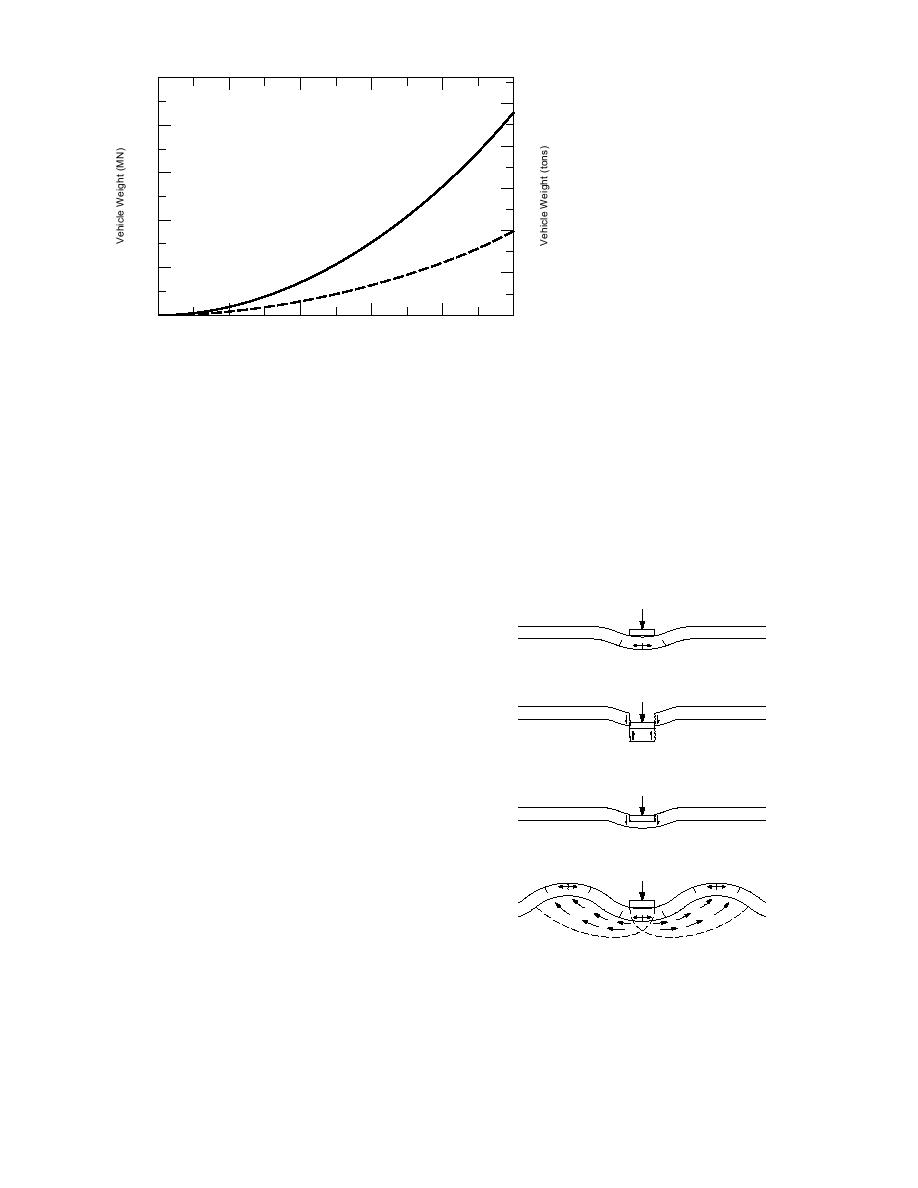
1.0
100
0.8
80
Wet Ground
0.6
60
0.4
40
Dry Ground
0.2
20
0
0
Figure 12. Vehicle bearing capacity of
0
0.2
0.4
0.6
0.8
1.0
frozen ground.
Frost Depth (m)
through failure of a frozen layer that is less than
or thawing are assumed to be the same as for un-
0.5 m thick:
frozen conditions.
P = 0.35 t2
for dry conditions
(14)
Bearing capacity of
freezing ground
P = 0.86 t2
for wet conditions
(15)
Vehicle operation on freezing ground is char-
acterized by the ability of the ground to fully sup-
where P is the maximum recommended load in
port the vehicle. For unfrozen soils that are not
MN and t is the frost depth in meters. The wet
extremely difficult to traverse, the presence of 5
condition represents saturated peat. In the dry con-
cm of frost at the surface will usually allow un-
limited cross country operation (Richmond 1991).
Terrain that is normally untrafficable may require
P
a substantial frost layer before vehicle operations
are possible.
Certainly "soft" terrain stands to gain consid-
a. Tensile failure in the lower beam fibers.
erable strength upon freezing. For example, the
compressive strength of frozen peat can be 350
P
400 times its unfrozen strength (MacFarlane 1968),
making it possible to operate vehicles in peat areas
as long as they are frozen. We use a definition of
b. Punching through the frozen layers.
soft terrain based on the Cone Index, where val-
ues of 50 or less constitute very weak soils. Al-
P
though cone penetration is not particularly appli-
cable to measuring the strength of heavily veg-
etated terrain, it can serve as a gross assessment
c. Crushing and compaction of the frozen
of the bearing capacity of the ground, disregard-
material.
ing the strength of root systems. Niemi and Bayer
P
(1970) have documented Cone Index values of 50
or less for peat or muskeg.
To arrive at predictions of bearing capacity for
frozen ground over a soft substrate, we utilize pub-
d. General shear failure of the underlying
lished guidelines for forestry operations on peat-
material and tensile failure of the frozen
lands (Rummukainen 1984) (Table 1). The equiva-
layer.
lent loads are estimates of the gross vehicle weight.
From these guidelines the following equations
Figure 13. Bearing failure modes for a
were generated to represent the limits for a break-
shallow frozen layer over soft ground.
10



 Previous Page
Previous Page
